Seagate 2010 Annual Report Download - page 10
Download and view the complete annual report
Please find page 10 of the 2010 Seagate annual report below. You can navigate through the pages in the report by either clicking on the pages listed below, or by using the keyword search tool below to find specific information within the annual report.-
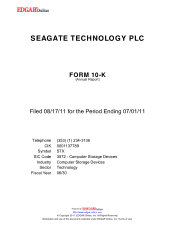 1
1 -
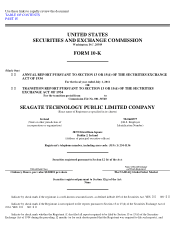 2
2 -
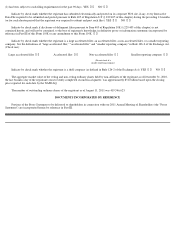 3
3 -
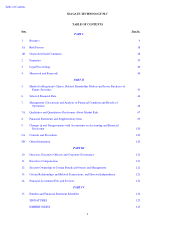 4
4 -
 5
5 -
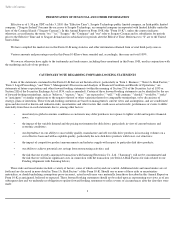 6
6 -
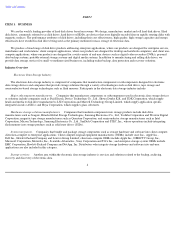 7
7 -
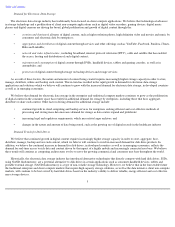 8
8 -
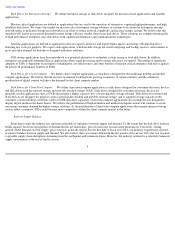 9
9 -
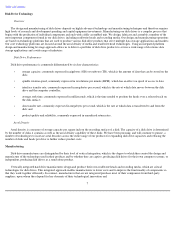 10
10 -
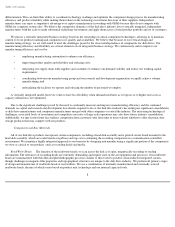 11
11 -
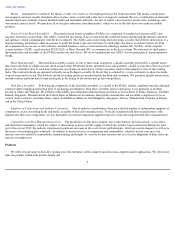 12
12 -
 13
13 -
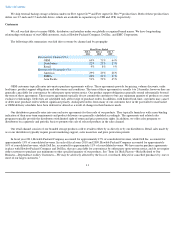 14
14 -
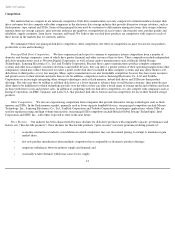 15
15 -
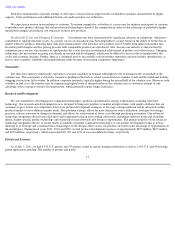 16
16 -
 17
17 -
 18
18 -
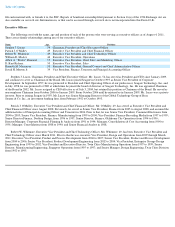 19
19 -
 20
20 -
 21
21 -
 22
22 -
 23
23 -
 24
24 -
 25
25 -
 26
26 -
 27
27 -
 28
28 -
 29
29 -
 30
30 -
 31
31 -
 32
32 -
 33
33 -
 34
34 -
 35
35 -
 36
36 -
 37
37 -
 38
38 -
 39
39 -
 40
40 -
 41
41 -
 42
42 -
 43
43 -
 44
44 -
 45
45 -
 46
46 -
 47
47 -
 48
48 -
 49
49 -
 50
50 -
 51
51 -
 52
52 -
 53
53 -
 54
54 -
 55
55 -
 56
56 -
 57
57 -
 58
58 -
 59
59 -
 60
60 -
 61
61 -
 62
62 -
 63
63 -
 64
64 -
 65
65 -
 66
66 -
 67
67 -
 68
68 -
 69
69 -
 70
70 -
 71
71 -
 72
72 -
 73
73 -
 74
74 -
 75
75 -
 76
76 -
 77
77 -
 78
78 -
 79
79 -
 80
80 -
 81
81 -
 82
82 -
 83
83 -
 84
84 -
 85
85 -
 86
86 -
 87
87 -
 88
88 -
 89
89 -
 90
90 -
 91
91 -
 92
92 -
 93
93 -
 94
94 -
 95
95 -
 96
96 -
 97
97 -
 98
98 -
 99
99 -
 100
100 -
 101
101 -
 102
102 -
 103
103 -
 104
104 -
 105
105 -
 106
106 -
 107
107 -
 108
108 -
 109
109 -
 110
110 -
 111
111 -
 112
112 -
 113
113 -
 114
114 -
 115
115 -
 116
116 -
 117
117 -
 118
118 -
 119
119 -
 120
120 -
 121
121 -
 122
122 -
 123
123 -
 124
124 -
 125
125 -
 126
126 -
 127
127 -
 128
128 -
 129
129 -
 130
130 -
 131
131 -
 132
132 -
 133
133 -
 134
134 -
 135
135 -
 136
136 -
 137
137 -
 138
138 -
 139
139 -
 140
140 -
 141
141 -
 142
142 -
 143
143 -
 144
144 -
 145
145 -
 146
146 -
 147
147 -
 148
148 -
 149
149 -
 150
150 -
 151
151 -
 152
152 -
 153
153 -
 154
154 -
 155
155 -
 156
156 -
 157
157 -
 158
158 -
 159
159 -
 160
160 -
 161
161 -
 162
162 -
 163
163 -
 164
164 -
 165
165 -
 166
166 -
 167
167 -
 168
168 -
 169
169 -
 170
170 -
 171
171 -
 172
172 -
 173
173 -
 174
174 -
 175
175 -
 176
176 -
 177
177 -
 178
178 -
 179
179 -
 180
180 -
 181
181 -
 182
182 -
 183
183 -
 184
184 -
 185
185 -
 186
186 -
 187
187 -
 188
188 -
 189
189 -
 190
190 -
 191
191 -
 192
192 -
 193
193 -
 194
194 -
 195
195 -
 196
196 -
 197
197 -
 198
198 -
 199
199 -
 200
200 -
 201
201 -
 202
202 -
 203
203 -
 204
204 -
 205
205 -
 206
206 -
 207
207 -
 208
208 -
 209
209 -
 210
210 -
 211
211 -
 212
212 -
 213
213 -
 214
214 -
 215
215 -
 216
216 -
 217
217 -
 218
218 -
 219
219 -
 220
220 -
 221
221 -
 222
222 -
 223
223 -
 224
224 -
 225
225 -
 226
226 -
 227
227 -
 228
228 -
 229
229 -
 230
230 -
 231
231 -
 232
232 -
 233
233 -
 234
234 -
 235
235 -
 236
236 -
 237
237 -
 238
238 -
 239
239 -
 240
240 -
 241
241 -
 242
242 -
 243
243 -
 244
244 -
 245
245 -
 246
246 -
 247
247 -
 248
248 -
 249
249 -
 250
250 -
 251
251 -
 252
252 -
 253
253 -
 254
254 -
 255
255 -
 256
256 -
 257
257 -
 258
258 -
 259
259 -
 260
260 -
 261
261 -
 262
262 -
 263
263 -
 264
264 -
 265
265 -
 266
266 -
 267
267 -
 268
268 -
 269
269 -
 270
270 -
 271
271 -
 272
272 -
 273
273 -
 274
274 -
 275
275 -
 276
276 -
 277
277 -
 278
278 -
 279
279 -
 280
280 -
 281
281 -
 282
282 -
 283
283 -
 284
284 -
 285
285
 |
 |

Table of Contents
Disk Drive Technology
Overview
The design and manufacturing of disk drives depends on highly advanced technology and manufacturing techniques and therefore requires
high levels of research and development spending and capital equipment investments. Manufacturing our disk drives is a complex process that
begins with the production of individual components and ends with a fully assembled unit. We design, fabricate and assemble a number of the
most important components found in our disk drives, including read/write heads and recording media. Our design and manufacturing operations
are based on technology platforms that are used to produce various disk drive products that serve multiple data storage applications and markets.
Our core technology platforms are focused around the areal density of media and read/write head technologies. Using an integrated platform
design and manufacturing leverage approach allows us to deliver a portfolio of disk drive products to service a wide range of electronic data
storage applications and a wide range of industries.
Disk Drive Performance
Disk drive performance is commonly differentiated by six key characteristics:
•
storage capacity, commonly expressed in gigabytes (GB) or terabytes (TB), which is the amount of data that can be stored on the
disk;
• spindle rotation speed, commonly expressed in revolutions per minute (RPM), which has an effect on speed of access to data;
•
interface transfer rate, commonly expressed in megabytes per second, which is the rate at which data moves between the disk
drive and the computer controller;
• average seek time, commonly expressed in milliseconds, which is the time needed to position the heads over a selected track on
the disk surface;
•
data transfer rate, commonly expressed in megabytes per second, which is the rate at which data is transferred to and from the
disk; and
•
product quality and reliability, commonly expressed in annualized return rates.
Areal Density
Areal density is a measure of storage capacity per square inch on the recording surface of a disk. The capacity of a disk drive is determined
by the number of disks it contains as well as the areal density capability of these disks. We have been pursuing, and will continue to pursue, a
number of technologies to increase areal densities across the entire range of our products for expanding disk drive capacities and reducing the
number of disks and heads per drive to further reduce product costs.
Manufacturing
Disk drive manufacturers are distinguished by their level of vertical integration, which is the degree to which they control the design and
manufacture of the technology used in their products and by whether they are captive, producing disk drives for their own computer systems, or
independent, producing disk drives as a stand-alone product.
Vertically integrated hard drive manufacturers design and produce their own read/write heads and recording media, which are critical
technologies for disk drives. This integrated approach enables manufacturers to lower costs and to improve the functionality of components so
that they work together efficiently. In contrast, manufacturers that are not integrated purchase most of their components from third-party
suppliers, upon whom they depend for key elements of their technological innovation and
7
